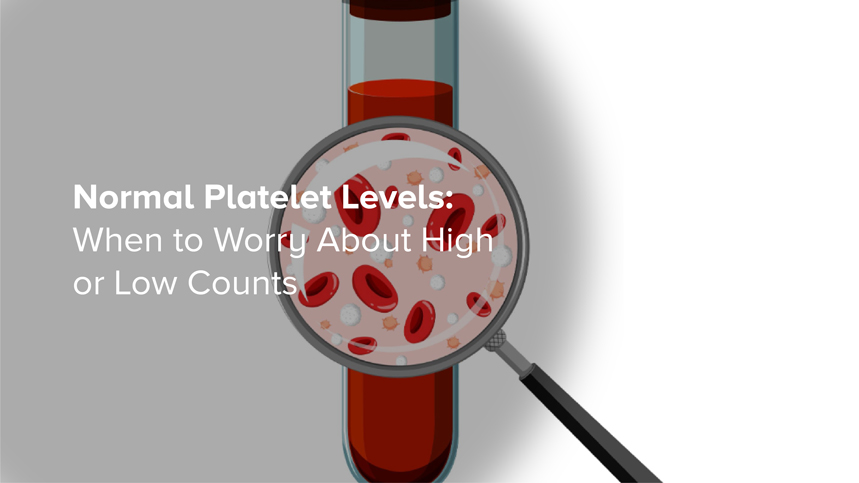


Condition
- Others
- Others
- Others
- Others
- Others
- Others
- Others
- Others
- Others
- Others
- Others
- Others
- Others
- Others
- Others
- Others
- Others
- Others
- Others
- Others
- Others
- Others
- Others
- Others
- Others
- Others
- Others
- Others
- Others
- Others
- Others
- Others
- Others
- Others
- Others
- Others
- Others
- Others
- Others
- Others
- Others
- Others
- Others
- Others
- Others
- Others
- Others
- Others
- Others
- Others
- Others
- Others
- Others
- Others
- Others
- Others
- Others
- Others
- Others
- Others
- Others
- Others
- Others
- Others
- Others
- Others
- Top tests
- Top tests
- Top tests
- Top tests
- Top tests
- Top tests
- Top tests
- Top tests
- Top tests
- Preventive Health Checkup
- Top tests
- Top tests
- Top tests
- Top tests
- Blood Banking & Transfusion
- Lifestyle Packages
- Blood Banking & Transfusion
- Blood Banking & Transfusion
- Top tests
- Top tests
- Lifestyle Packages
- Diabetes
- Blood Banking & Transfusion
- Blood Banking & Transfusion
- Blood Banking & Transfusion
- Blood Banking & Transfusion
- Blood Banking & Transfusion
- Others
- Others
- Others
- Others
- Blood Banking & Transfusion
- Blood Banking & Transfusion
- Blood Banking & Transfusion
- Blood Banking & Transfusion
- Vitamin Deficiency
- Vitamin Deficiency
- Vitamin Deficiency
- Vitamin Deficiency
- Vitamin Deficiency
- Blood Banking & Transfusion
- Blood Banking & Transfusion
- Blood Banking & Transfusion
- Blood Banking & Transfusion
- Diabetes
- Diabetes
- Heart Disease & Hypertension
- Preventive Health Checkup
- Diabetes
- Preventive Health Checkup
- Preventive Health Checkup
- Diabetes
- Diabetes
- Heart Disease & Hypertension
- Top tests
- Heart Disease & Hypertension
- Diabetes
- Top tests
- Diabetes
- Heart Disease & Hypertension
- Lifestyle Packages
- Heart Disease & Hypertension
- Lifestyle Packages
- Heart Disease & Hypertension
- Heart Disease & Hypertension
- Lifestyle Packages
- Preventive Health Checkup
- Preventive Health Checkup
- Top tests
- Preventive Health Checkup
- Heart Disease & Hypertension
- Heart Disease & Hypertension
- Heart Disease & Hypertension
- Top tests
- Top tests
- Lifestyle Packages
- Heart Disease & Hypertension
- Heart Disease & Hypertension
- Top tests
- Heart Disease & Hypertension
- Preventive Health Checkup
- Diabetes
- Lifestyle Packages
- Heart Disease & Hypertension
- Top tests
- Heart Disease & Hypertension
- Heart Disease & Hypertension
- Diabetes
- Lifestyle Packages
- Preventive Health Checkup
- Diabetes
- Top tests
- Diabetes
- Allergy
- Heart Disease & Hypertension
- Diabetes
- Heart Disease & Hypertension
- Diabetes
- Lifestyle Packages
- Lifestyle Packages
- Top tests
- Preventive Health Checkup
- Lifestyle Packages
- Preventive Health Checkup
- Preventive Health Checkup
- Diabetes
- Top tests
- Heart Disease & Hypertension
- Preventive Health Checkup
- Top tests
- Heart Disease & Hypertension
- Lifestyle Packages
- Lifestyle Packages
- Diabetes
- Preventive Health Checkup
- Top tests
- Diabetes
- Top tests
- Preventive Health Checkup
- Preventive Health Checkup
- Preventive Health Checkup
- Diabetes
- Lifestyle Packages
- Lifestyle Packages
- Heart Disease & Hypertension
- Lifestyle Packages
- Heart Disease & Hypertension
- Lifestyle Packages
- Preventive Health Checkup
- Preventive Health Checkup
- Preventive Health Checkup
- Lifestyle Packages
- Top tests
- Lifestyle Packages
- Top tests
- Lifestyle Packages
- Top tests
- Diabetes
- Diabetes
- Others
- Blood Disorders
- Top tests
- Others
- Others
- Others
- Fever
- Fever
- Blood Disorders
- Blood Disorders
- Preventive Health Checkup
- Preventive Health Checkup
- Profile
- Kidney Disease
- Kidney Disease
- Diabetes
- Diabetes
- Heart Disease & Hypertension
- Preventive Health Checkup
- Lifestyle Packages
- Thyroid Disorder
- Diabetes
- Diabetes
- Diabetes
- Diabetes
- Diabetes
- Diabetes
- Diabetes
- Top tests
- Allergy
- Top tests
- Top tests
- Top tests
- Top tests
- Diabetes
- Top tests
- Diabetes
- Top tests
- Top tests
- Top tests
- Liver Disease
- Diabetes
- Top tests
- Vitamin Deficiency
- Top tests
- Top tests
- Liver Disease
- Top tests
- Top tests
- Top tests
- Anemia
- Anemia
- Anemia
- Diabetes
- Diabetes
- Anemia
- Top tests
- Top tests
- Top tests
- Preventive Health Checkup
- Thyroid Disorder
- Heart Disease & Hypertension
- Top tests
- Preventive Health Checkup
- Diabetes
- Heart Disease & Hypertension
- Top tests
- Fever
- Allergy
- Liver Disease
- Lifestyle Packages
- Heart Disease & Hypertension
- Top tests
- Arthritis
- Top tests
- Top tests
- Heart Disease & Hypertension
- Kidney Disease
- Preventive Health Checkup
- Allergy
- Top tests
- Lifestyle Packages
- Top tests
- Kidney Disease
- Top tests
- Lifestyle Packages
- Top tests
- Preventive Health Checkup
- Preventive Health Checkup
- Top tests
- Top tests
- Vitamin Deficiency
- Allergy
- Diabetes
- Top tests
- Top tests
- Top tests
- Top tests
- Heart Disease & Hypertension
- Allergy
- Top tests
- Preventive Health Checkup
- Top tests
- Top tests
- Infertility
- Top tests
- Lifestyle Packages
- Allergy
- Diabetes
- Heart Disease & Hypertension
- Lifestyle Packages
- Preventive Health Checkup
- Preventive Health Checkup
- Top tests
- Preventive Health Checkup
- Top tests
- Diabetes
- Top tests
- Infertility
- Top tests
- Thyroid Disorder
- Top tests
- Allergy
- Preventive Health Checkup
- Vitamin Deficiency
- Top tests
- Top tests
- Infertility
- Lifestyle Packages
- Diabetes
- Liver Disease
- Kidney Disease
- Vitamin Deficiency
- Top tests
- Heart Disease & Hypertension
- Heart Disease & Hypertension
- Top tests
- Heart Disease & Hypertension
- Heart Disease & Hypertension
- Heart Disease & Hypertension
- Infertility
- Heart Disease & Hypertension
- Vitamin Deficiency
- Vitamin Deficiency
- Arthritis
- Arthritis
- Top tests
- Top tests
- Lifestyle Packages
- Preventive Health Checkup
- Lifestyle Packages
- Preventive Health Checkup
- Vitamin Deficiency
- Top tests
- Lifestyle Packages
- Lifestyle Packages
- Preventive Health Checkup
- Top tests
- Preventive Health Checkup
- Top tests
- Heart Disease & Hypertension
- Infertility
- Top tests
- Top tests
- Preventive Health Checkup
- Lifestyle Packages
- Top tests
- PCOD
- Preventive Health Checkup
- Lifestyle Packages
- Preventive Health Checkup
- Top tests
- Fever
- PCOD
- Kidney Disease
- Top tests
- Top tests
- Preventive Health Checkup
- Preventive Health Checkup
- Liver Disease
- Thyroid Disorder
- Top tests
- Heart Disease & Hypertension
- PCOD
- Top tests
- Arthritis
- Preventive Health Checkup
- Kidney Disease
- Lifestyle Packages
- Top tests
- Allergy
- Top tests
- Top tests
- Diabetes
- Thyroid Disorder
- Preventive Health Checkup
- Top tests
- Lifestyle Packages
- Preventive Health Checkup
- Top tests
- Kidney Disease
- Liver Disease
- Infertility
- Top tests
- Anemia
- Top tests
- Top tests
- Top tests
- Preventive Health Checkup
- Bone Health
- Cancer
- Fatty Liver

Tests
Platelets are tiny, colorless cell fragments in our blood that play a crucial role in forming clots to stop or prevent bleeding. When you get a cut, platelets rush to the site of the injury, stick together, and form a plug that seals the wound. A normal platelet count is essential for this process and for overall health.
Deviations from the normal range can indicate an underlying medical condition. Understanding what constitutes a normal platelet count and the implications of high or low levels is a vital part of proactive healthcare management. This guide provides a clear overview of platelet levels, the conditions associated with abnormal counts, and when it is necessary to consult a healthcare professional.
What is a Normal Platelet Count?
A normal platelet count in a healthy adult typically ranges from 150,000 to 450,000 platelets per microliter of blood. This range can vary slightly depending on the laboratory and the specific testing methods used. A complete blood count (CBC) is the standard test used to measure the number of platelets, along with other blood components like red and white blood cells.
It is important to note that certain factors can cause temporary fluctuations in platelet levels, including:
- Intense physical exercise
- Menstrual cycle
- Pregnancy
- High altitudes
However, persistently high or low counts outside the normal range often warrant further investigation to identify the underlying cause.
Low Platelet Count (Thrombocytopenia)
Thrombocytopenia is the medical term for a platelet count below 150,000 platelets per microliter of blood. A low count increases the risk of bleeding. While a mild decrease may not cause any symptoms, a significantly low count can lead to serious health complications.
Causes of Thrombocytopenia
Low platelet counts can result from three primary issues: decreased production in the bone marrow, increased destruction of platelets in the bloodstream, or sequestration of platelets in the spleen.
1. Decreased Platelet Production:
The bone marrow is responsible for producing platelets. Conditions that damage the bone marrow can lead to insufficient platelet production.
- Aplastic anemia: A rare condition where the bone marrow stops producing enough new blood cells.
- Leukemia and other cancers: Cancers that affect the bone marrow can crowd out healthy platelet-producing cells.
- Viral infections: Infections such as hepatitis C, HIV, and Epstein-Barr virus can suppress bone marrow function.
- Chemotherapy and radiation therapy: These cancer treatments can damage bone marrow cells.
- Excessive alcohol consumption: Heavy drinking can interfere with platelet production.
- Vitamin deficiencies: A lack of vitamin B12 or folate can impair blood cell formation.
2. Increased Platelet Destruction:
In some conditions, the body's immune system mistakenly attacks and destroys its own platelets.
- Immune Thrombocytopenia (ITP): An autoimmune disorder where the immune system targets platelets.
- Thrombotic Thrombocytopenic Purpura (TTP): A rare blood disorder that causes small blood clots to form throughout the body, using up a large number of platelets.
- Drug-induced thrombocytopenia: Certain medications, like heparin and some antibiotics, can trigger an immune reaction against platelets.
- Systemic Lupus Erythematosus (SLE): An autoimmune disease that can affect various parts of the body, including blood cells.
3. Platelet Sequestration:
The spleen plays a role in filtering blood. If the spleen becomes enlarged (splenomegaly), it can trap an excessive number of platelets, reducing the count in circulation.
- Liver disease and cirrhosis: Advanced liver disease can cause the spleen to enlarge.
Symptoms of Low Platelet Count
Symptoms of thrombocytopenia may not be apparent until the count is significantly low. When they do occur, they can include:
- Easy or excessive bruising (purpura)
- Superficial bleeding into the skin that appears as a rash of pinpoint-sized reddish-purple spots (petechiae)
- Prolonged bleeding from cuts
- Bleeding from the gums or nose
- Blood in urine or stools
- Unusually heavy menstrual flows
- Fatigue
High Platelet Count (Thrombocytosis)
Thrombocytosis is the condition characterized by a platelet count higher than 450,000 platelets per microliter of blood. This condition can be categorized as either reactive (secondary) or essential (primary). An elevated platelet count can increase the risk of forming unnecessary blood clots.
Causes of Thrombocytosis
1. Reactive (Secondary) Thrombocytosis:
This is the more common type and occurs as a reaction to another medical condition. The platelet count usually returns to normal once the underlying issue is resolved.
- Infections: Particularly bacterial infections.
- Inflammation: Conditions like rheumatoid arthritis or inflammatory bowel disease.
- Iron-deficiency anemia: The body may produce more platelets in response to low iron levels.
- Cancer: Cancers such as lung, gastrointestinal, or ovarian cancer can cause a reactive increase in platelets.
- Spleen removal (splenectomy): The spleen normally stores about one-third of the body's platelets. Its removal can lead to a higher count in the bloodstream.
- Recent surgery or trauma: The body may temporarily increase platelet production as part of the healing process.
2. Essential (Primary) Thrombocythemia:
This is a rare blood disorder where the bone marrow produces too many platelets due to a genetic mutation. This is considered a type of myeloproliferative neoplasm, a group of blood cancers. The cause is often unknown.
Symptoms of High Platelet Count
Many individuals with thrombocytosis, especially the reactive type, experience no symptoms. When symptoms do occur, they are often related to blood clots (thrombosis) or bleeding.
- Headache and dizziness
- Chest pain
- Numbness or tingling in the hands and feet
- Vision changes
- Weakness
- Bleeding: Despite a high number of platelets, they may not function correctly, leading to bleeding issues like nosebleeds or easy bruising.
When to Seek Medical Attention
It is essential to consult a healthcare professional if you experience any of the symptoms associated with high or low platelet counts. A complete blood count (CBC) test can quickly determine your platelet levels. If your count is abnormal, your doctor will conduct further tests to identify the underlying cause and recommend an appropriate treatment plan.
Managing platelet disorders involves treating the root cause. For thrombocytopenia, treatments may include medications to suppress the immune system or stimulate platelet production. For thrombocytosis, treatment may focus on addressing the underlying inflammatory condition or, in the case of essential thrombocythemia, medications to lower the platelet count and reduce clotting risk.
Conclusion
Understanding your platelet count is a key component of monitoring your overall health. Regular health check-ups and blood tests provide a comprehensive assessment, allowing for the early detection and management of potential issues. At AMPATH Labs, we are committed to providing high-quality, accessible, and affordable diagnostic services. Our state-of-the-art facilities and certified professionals ensure you receive accurate and timely reports, empowering you and your doctor to make informed health decisions.
WANT TO BOOK HEALTH CHECKUP ?
Categories
Others
74
Top tests
100
Preventive Health Checkup
46
Blood Banking & Transfusion
16
Lifestyle Packages
35
Diabetes
40
Vitamin Deficiency
12
Heart Disease & Hypertension
37
Allergy
9
Blood Disorders
3
Fever
4
Profile
1
Kidney Disease
8
Thyroid Disorder
5
Liver Disease
6
Anemia
5
Arthritis
4
Infertility
6
PCOD
3
Bone Health
1
Cancer
1
Fatty Liver
1
Recent Blogs
Vitamin B1 Test: Why Thiamine Levels Matter for Your Health
Vitamin B1, also known as thiamine, is an essential nutrient that plays a critical role...
27-10-2025
Vitamin A Deficiency: Signs, Symptoms, and How to Prevent It
Vitamin A is an essential fat-soluble vitamin that plays a vital role in maintaining good...
27-10-2025
Fatty Acids Test: When Your Doctor Might Recommend It
Fatty acids play a crucial role in maintaining optimal health, yet many people remain unaware...
27-10-2025







